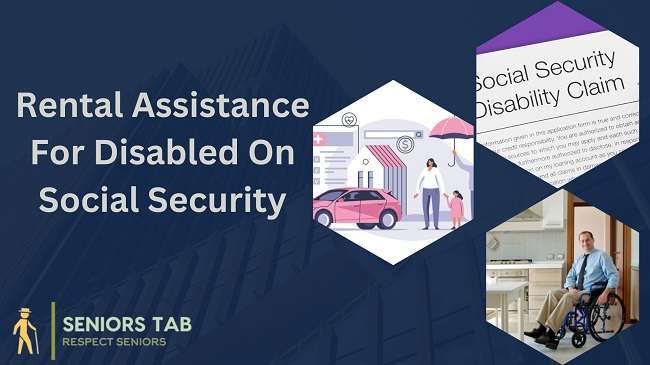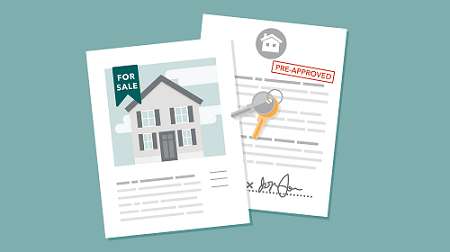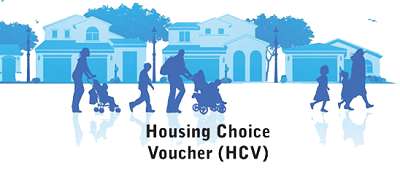Did you know that if you are receiving Social Security, there is rental assistance available to those who have a disability? You may be unable to work as a result of a disability, which will make it difficult for you to pay your payments and could result in you losing your house. For housing support, some people with impairments turn to Social Security, but other government initiatives are more beneficial.
The Social Security program known as Social Security Disability Insurance (SSDI) offers limited but necessary monthly compensation to persons who are unable to work as a result of a major injury, chronic disease, or other debilitating condition. Although the SSDI program can be utilized to help pay bills like medical and living costs, it doesn’t offer specific housing aid.
In addition to Social Security, there is also Supplemental Security Income (SSI). It offers checks every month to disabled or blind individuals and kids who have a low income. Additionally, it offers assistance to people 65 and older. Similarly to SSDI, SSI does not cover housing expenses.
Thankfully, the U.S. Department of Housing and Urban Development (HUD) as well as other government entities offer housing benefits to people with disabilities who are facing financial hardships.
- Why Disabled People Need Social Security Rental Assistance?
- Is Rental Assistance Available Through Social Security Disability?
- How To Get Rental Assistance For Disabled On Social Security
- 1. Section 8 Voucher Program
- 2. The Housing and Disability Advocacy Program (HDAP)
- 3. Housing Choice Vouchers
- 4. Section 811 Supportive Housing for Persons with Disabilities
- 5. Social Security Disability Housing Assistance
- Final Verdict
Why Disabled People Need Social Security Rental Assistance?
Housing costs have gone up, and the marketplace has grown more unpredictable as the US economy remains insecure as a result of the coronavirus outbreak. This is bad news for millions of Americans, particularly individuals who are disabled and rely on social security, who often lack the resources to find secure and affordable housing.

Nevertheless, there are programs offered by the federal government and other agencies that might be helpful. In addition to having additional negative effects on a person’s and their family’s health and well-being, impairments can cause a large loss in average income.
This article is your definitive guide to rental assistance, with all the necessary information you need. We’ll also go through a wide range of advice that might help you find the resources you require.
Is Rental Assistance Available Through Social Security Disability?
If you meet the requirements for Supplemental Security Income (SSI) or Social Security Disability Insurance (SSDI), you might ask if housing aid is offered before, during, or after the application procedure. Sadly, that is not the case, and while they wait for a final determination on their disability living allowance, several people remain homeless or face the danger of doing so.
Thankfully, there are other options to consider while looking for housing aid. The federal government’s Section 8 program, administered through the U.S Department of Housing and Urban Development (HUD), offers housing assistance for families with children; however, obtaining a voucher is often a long-term process due to its limited availability.
The Section 811 program was created to assist people with disabilities in locating safe and reasonably priced housing options so they can dwell as freely as possible in their neighborhoods. The initiative gives people projects subsidized housing via state housing organizations and encourages nonprofit development businesses to construct low-cost housing by providing subsidies and financial advances interest-free.
To gain access to Section 811 housing, certain qualifications must be met. At least 1 grownup member of the household must have an inability, such as a major physical impairment, developmental disability, or persistent mental illness. Furthermore, the family must have a very low income, which is typically defined as being between a certain ratio of the area’s average income.
Rent for program participants who receive rental assistance will be subsidized. It will cover the gap between the building’s HUD-approved operational costs and the rent the disabled tenant can afford. The contract’s original term is three years, but it may be extended provided there are sufficient finances and the family continues to be eligible for the services. In addition to housing and rental aid, Section 811 offers supplemental assistance in case management and financial advice.
How To Get Rental Assistance For Disabled On Social Security
People receiving social security are eligible for an emergency assistance program. This is a brand-new initiative that was started after the COVID-19 pandemic. It offers social security recipients rental and housing help. If you’re receiving Supplemental Security Income or Social Security disability payments, this program could be a huge advantage for you.
The federal government is aware that certain people have been more severely impacted by COVID than others. Many Americans lost their jobs and income. If you are struggling to make mortgage or rent payments, the United States government can provide assistance.
Additional financing initiatives at the local and state levels support this initiative. All three governmental tiers are cooperating to safeguard individuals in their residences and prevent eviction or foreclosures. Let’s discuss some other programs that offer rental assistance for disabled on social security!
1. Section 8 Voucher Program

It is always possible for Americans with disabilities to apply to participate in the Section 8 voucher program. The nation’s largest program for low-cost housing is this one. That has good and terrible aspects.
The excellent thing is that Section 8 assists several individuals each year. The unfortunate thing is that Section 8 assists several individuals each year. In your location, there may be long waiting lists to move into a Section 8 apartment.
The Housing Choice Voucher (HCV) program, formerly referred to as Section 8, is HUD’s primary housing aid program. The purpose of it is to make it easier for “extremely low-income households, the seniors, and the disabled to get good, secure, and hygienic housing on the private market.”
More than 2,100 state and regional housing organizations manage HCV. In the entire nation, housing choice vouchers are provided to about 2.2 million low-income families. Various kinds of housing vouchers are given out based on eligibility requirements and administrative information.
Section 8: How Does It Work?
Housing vouchers are given to low-income people and families as part of Section 8. These vouchers serve as rebates to assist pre-qualified properties with their monthly rent payments. The refunds can differ as well, and monthly rental prices can vary depending on the locality.
Section 8: Eligibility
Ensure you can qualify for the program before submitting an application. The eligibility requirements are based on your personal history and income. Selecting the right locale is the first step of your journey. Once you’ve settled on a location, contact the neighborhood’s housing bureau to get started on finding your dream home.
Try contacting provincial or regional and local authorities if the area where you want to live does not have a housing authority. After you have narrowed down your search area, it is vital to calculate how much your family earns. That typically depends on the household’s adults’ one or two sources of income.
Discover if you qualify for Section 8 housing with the comprehensive database of resources provided by the Department of Housing and Urban Development (HUD). Nevertheless, to acquire the most precise information about your particular situation, get in touch with your neighborhood public housing authority first.
Section 8: Background Investigation and Immigration
The last thing Section 8 will inquire about is your immigration status and criminal background. To be eligible for Section 8, your household must have at least one legal resident of the United States.
When you submit, HUD will also take into account any household participation in the legal system. What kind of history may indeed qualify and what may reject an application from the program will be decided by your local property authority.
Section 8: How To Apply
The local housing authority must be contacted as the initial step in the Section 8 application process. Tell them you’re eager to join the program so they can give you advice on any initial steps you might need to take. Having an email address makes it easier to sign up for Section 8 alerts.
You will be informed when the regional housing department opens the waitlist through these alerts. Get your place on the queue as immediately it opens and be prepared to wait, particularly if you reside in a neighborhood where the nearby housing is pricey.
Be aware that the waitlist procedure cannot be sped up. Some people can try to con you by claiming that if you give them money, they’ll put you higher on the list. Applying never costs anything.
Therefore, it should be a warning sign if someone asks you for money. Being adaptable in your field is one method to hasten the process. A valid doctor’s note may be useful in some circumstances as well.
2. The Housing and Disability Advocacy Program (HDAP)

The program for housing and disability advocacy is still very young. It was launched in 2016, revamped in 2019, and aims to assist Americans in obtaining the housing assistance and disability benefits they are entitled to. These people receive assistance from HDAP through financial aid.
Additionally, the program provides “wraparound services” to assist Americans in finding more long-term housing. Rental help, short-term housing, crisis intervention, and residential counseling are among the integrated services offered.
In fact, HDAP will provide more immediate financial assistance for moving expenses, energy prices, security deposits, and legal assistance. In certain cases, HDAP has even assisted Americans in repairing their credit.
For their initiative, HDAP employs what they refer to as a “housing-first” model. Based on evidence, they will step in and alleviate someone’s housing condition. That person will get help if the information is in line with the degree of need HDAP is trying to meet.
HDAP: Eligibility
People who are presently homeless are the focus of HDAP. Additionally, HDAP may intervene to assist someone who is homeless and most likely qualified for government disability programs.
Priority is given to those who are “chronically homeless” and who extensively rely on state- and county-funded programs. It’s crucial to remember that only citizens of California may participate in the HDAP program.
3. Housing Choice Vouchers

The Housing Choice Voucher (HCV) program, previously identified as Section 8, is the leading housing assistance scheme administered by HUD. The purpose of it is to make it easier for “extremely low-income households, the seniors, and the disabled to get good, secure, and hygienic housing on the private market.”
More than 2,100 state and regional housing organizations manage HCV. In the entire nation, various housing vouchers are provided to about 2.2 million low-income households. Various kinds of housing vouchers are given out based on eligibility requirements and administrative information.
Vouchers Based on Tenancy
Tenant-based vouchers are kept by the recipient(s), not the landlord or unit owner, and are not transferred. The tenant’s unit must first be accepted by the PHA in order to qualify for tenant-based assistance.
The PHA negotiates a contract with the owner of the unit under which the landlord will receive subsidized payments from the PHA. As long as the family complies with program rules, the lease agreement with the unit owner expires if the family vacates the leased unit, but the voucher remains with the family.
Vouchers for projects
Project-based vouchers (PBVs) are associated with certain units in particular structures or projects. In order to rent to families, people with low income housing for seniors with disabilities, the landlord has a contract with the state or municipal PHA.
Due to the fact that service providers can work more effectively with a bigger proportion of building inhabitants who have comparable needs, project-based vouchers may be more advantageous to tenants who are disabled or old.
Commonplace Vouchers
A mainstream voucher is available to families with a handicapped family member who needs housing support and is between the ages of 18 and 61. According to HUD, more than 66,000 individuals or households in the US are eligible for mainstream vouchers.
Vouchers for Non-Elderly Disabled
Vouchers for non-elderly disabled (NED) families are comparable to mainstream vouchers. These vouchers are designed to provide financial assistance for households whose head or co-head is living with disabilities. According to HUD, there are around 55,000 households or individuals in the US who receive NED vouchers.
Housing Assistance Vouchers from HUD-VA
The HUD-Veterans Affairs Supportive Housing (HUD-VASH) program integrates case management and therapeutic services from the U.S.
Department of Veterans Affairs with HUD’s HCV rental assistance (VA). For war veterans and their families who are homeless or in danger of losing their houses, HUD-VASH vouchers are available.
4. Section 811 Supportive Housing for Persons with Disabilities

The Section 811 program supports possibilities for rental housing that give residents with disabilities access to the necessary supportive services, enabling them to live as freely as feasible in the community.
The Section 811 program is allowed to run in two different ways: by giving nonprofit builders of affordable homes for people with disabilities interest-free capital advances and operating subsidies, as well as by giving project rental support to state housing agencies.
Section 811: Eligibility
For projects sponsored by project rental aid contracts (PRACs) and capital advances, families must have at least one senior member with a handicap and be extremely low-income (within 50% of the area’s median income).
Residents of exceptionally low-income households (those earning less than 30% of the area median income) with a minimum of one adult family member with a handicap are required for projects supported through Project Rental Assistance.
Section 811: How To Apply
Applications must be submitted in accordance with a Notice of Funding Availability (NOFA), which is announced on Grants.gov and issued in the Federal Register each year.
5. Social Security Disability Housing Assistance
HUD provides financing to states, counties, and government entities to support initiatives that can assist people who receive Social Security benefits. The prerequisites for eligibility must be met by applicants. Housing vouchers and public housing are two of these initiatives.
Public Housing
A HUD-managed program called public housing offers suitable and secure rental homes at discounted rates to qualified low-income families, the elderly, and people with disabilities.
Local public housing agencies (PHAs) get funding from HUD to administer and run these housing programs. Who is admitted and who is not is ultimately decided by the public housing organization.
Income caps are set by HUD for the program.
The lower income restrictions are set at 80% of the county’s or metro area’s average income.
The very low-income threshold is set at 50% of the county’s or metro area’s median wage.
The PHA may consider other factors as well:
- Whether they are a family, senior, or have a disability.
- Immigration status or U.S. nationality, and/or
- Rental history references
Housing Vouchers
Households with a disabled family member can get housing assistance from HUD-funded housing vouchers. These programs are designed to assist those who live near or below the poverty line in achieving financial stability.
Who is qualified for a voucher is decided by the city and state government housing organizations? A family’s income should typically not exceed 50% of the median wage for the county or metro area where they reside.
The agencies also decide how much the housing aid voucher will be worth. The agencies also take into account things like:
Family designation, senior citizen standing, disability condition, and/or status as a person
Immigration status or U.S. nationality.
Tenants who are given a voucher must pay rent and utilities using 30% of their monthly adjusted gross family income. If the rent is more than what the program allows, that proportion can go to 40%.
You may like: How To Get Financial Assistance For Pregnant Mothers In 2023
Final Verdict
Getting rental assistance for disabled on social security is not a difficult task. You just need to step forward into your preferable option with the required eligibility conditions. Choose any of the mentioned government programs or federal aid programs with public housing benefits.
